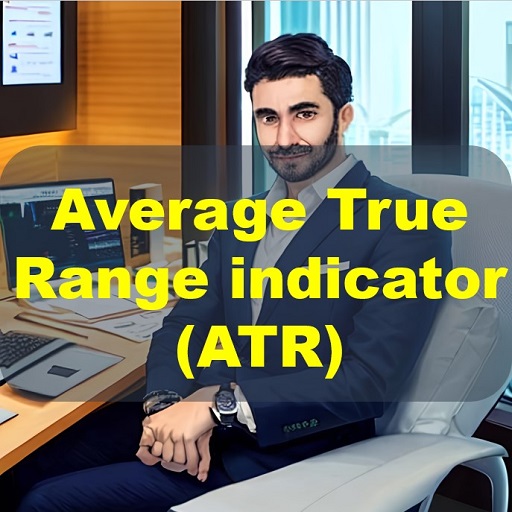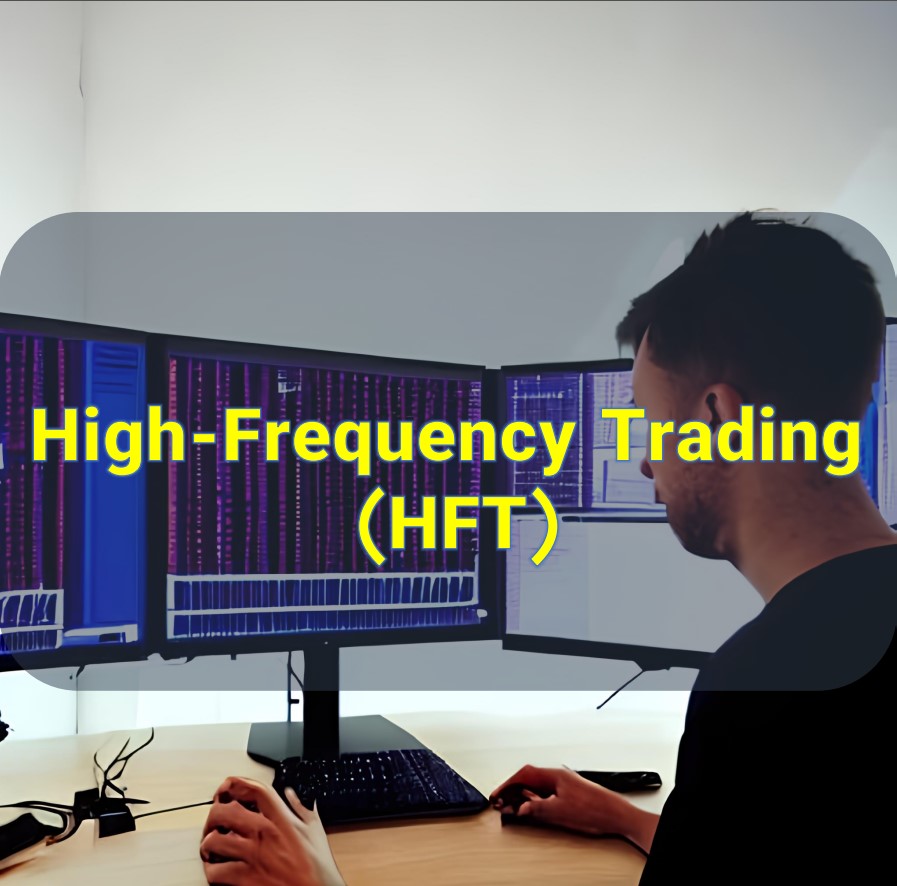The Average True Range indicator (ATR) is a technical analysis indicator that measures market volatility. It was developed by J. Welles Wilder Jr. and introduced in his book, “New Concepts in Technical Trading Systems.” The ATR is commonly used by traders and analysts to assess the potential price range of an asset and determine its level of volatility.
The ATR is calculated by taking the average of the true ranges over a specified period. The true range is the greatest of the following:
1. The difference between the current high and the current low.
2. The absolute value of the difference between the current high and the previous close.
3. The absolute value of the difference between the current low and the previous close.
Typically, the ATR is calculated over a 14-day period, but the number of periods can be adjusted to suit the trader’s preferences or the time frame being analyzed.
The ATR is often displayed as a line chart or histogram below the main price chart. It provides an indication of the average price volatility over the selected period. Higher ATR values indicate greater volatility, while lower values suggest reduced volatility.
Traders can use the ATR in various ways. For example, it can be used to set stop-loss levels, as wider ATR values may require wider stop-loss orders to account for increased price fluctuations. Additionally, the ATR can be used to compare volatility across different assets or timeframes.
It’s worth noting that the ATR is not an indicator of price direction or trend. Instead, it focuses on volatility measurement. Therefore, it is often used in conjunction with other technical analysis tools to make informed trading decisions.
Interpreting ATR Values
The ATR value itself represents the average range of price movement over the specified period. A higher ATR suggests greater volatility, indicating larger price swings, while a lower ATR indicates lower volatility and smaller price movements. Traders may use different threshold levels for ATR to define what they consider as high or low volatility based on their trading strategy and preferences.
ATR as a Volatility Filter
The ATR can be used as a filter to identify periods of high or low volatility. Traders may adjust their trading strategies based on the current ATR value. For example, during high volatility periods, they may widen their profit targets or set wider stop-loss orders to account for larger price swings. Conversely, during low volatility periods, they may tighten their profit targets or use smaller stop-loss orders.
ATR for Breakout Strategies
The ATR is often used in breakout trading strategies. Breakouts occur when the price breaks through a significant support or resistance level, indicating a potential trend reversal or continuation. Traders may set entry levels for breakout trades based on a multiple of the ATR. For example, they may enter a long position if the price breaks above the current resistance level plus one ATR.
ATR for Position Sizing
Traders may also use the ATR to determine the appropriate position size for a trade. By considering the ATR, they can adjust their position size based on the volatility of the asset. For instance, in higher volatility markets, they may reduce their position size to limit risk exposure, while in lower volatility markets, they may increase their position size to take advantage of potentially larger price moves.
ATR in Combination with Other Indicators
The ATR is often used in conjunction with other technical indicators to enhance trading decisions. For example, it can be combined with moving averages to identify potential trend reversals or to confirm breakouts. By analyzing multiple indicators together, traders can gain a more comprehensive view of market conditions and make more informed trading choices.
Remember that the ATR is just one tool among many in technical analysis. It is important to consider other factors, such as market fundamentals and other technical indicators, to make well-rounded trading decisions.
How to use Average true range indicator
The Average True Range (ATR) indicator can be used in various ways to assist in trading decisions. Here are a few common methods for utilizing the ATR:
Volatility Assessment
The ATR helps gauge the volatility of an asset. By comparing the current ATR value to historical levels, traders can assess whether the market is experiencing higher or lower volatility than usual. This information can be used to adjust trading strategies accordingly. For example, during high volatility periods, traders may opt for wider stop-loss orders or larger profit targets.
Stop Loss Placement
The ATR can help determine appropriate levels for setting stop-loss orders. By multiplying the ATR value by a chosen factor, traders can place their stop-loss levels beyond the normal price fluctuations. For example, if the ATR is 0.50 and a trader uses a multiplier of 2, they might place their stop-loss order 1 unit away from the entry price.
Position Sizing
The ATR can aid in position sizing by considering the volatility of the asset. By calculating the dollar value of the ATR and allocating a certain percentage of their capital, traders can determine the appropriate position size. For instance, if the ATR value is $2 and a trader is willing to risk 2% of their capital per trade, they can calculate their position size to ensure that a $2 move in the asset’s price would equate to a 2% loss.
Breakout Trading
The ATR can be used to identify potential breakout levels. Traders may set entry orders above or below significant price levels, such as support or resistance, plus a multiple of the ATR. This approach helps account for market volatility and confirms the breakout when the price surpasses the entry level.
Trend Confirmation
The ATR can assist in confirming the strength of a trend. When a market is trending, the ATR tends to increase, indicating stronger price movement. By monitoring the ATR alongside other trend-following indicators, such as moving averages, traders can gain confirmation of the trend’s momentum.
Remember, the ATR is just one tool and should not be relied upon as the sole basis for trading decisions. It is beneficial to combine the ATR with other technical indicators, chart patterns, and fundamental analysis to obtain a comprehensive understanding of the market. Additionally, it is crucial to consider risk management and personal trading preferences when applying the ATR indicator.
How exactly to use Average true range indicator
To use the Average True Range (ATR) indicator effectively, you can follow these steps:
Calculate the ATR
Determine the period for which you want to calculate the ATR. The default period is typically 14 days, but you can adjust it based on your trading style and timeframe. Calculate the true range for each period using the high, low, and close prices. Then, calculate the average of these true ranges over the specified period to obtain the ATR value.
Assess Volatility
Once you have the ATR value, compare it to historical ATR levels for the asset you are analyzing. This comparison helps you gauge the current volatility of the market. If the current ATR is higher than the historical average, it suggests increased volatility, while a lower ATR indicates decreased volatility.
Set Stop Loss Levels
The ATR can assist in determining appropriate stop-loss levels for your trades. By multiplying the ATR value by a chosen factor, you can set your stop-loss order at a distance from the entry price that accounts for the asset’s typical price fluctuations. For example, if the ATR is 1.50 and you use a multiplier of 2, you might set your stop-loss order 3 units away from the entry price.
Determine Position Sizing
The ATR can guide your position sizing by considering the volatility of the asset. Calculate the dollar value of the ATR and allocate a certain percentage of your capital for each trade. This ensures that the potential price movement, as indicated by the ATR, aligns with your risk management strategy. For example, if the ATR value is $3 and you are willing to risk 1% of your capital per trade, you can calculate your position size so that a $3 move in the asset’s price would represent a 1% loss.
Identify Breakout Levels
The ATR can be helpful in identifying potential breakout levels. Set entry orders above or below significant price levels, such as support or resistance, plus a multiple of the ATR. This approach accounts for market volatility and confirms the breakout when the price surpasses the entry level.
Confirm Trend Strength
The ATR can be used to confirm the strength of a trend. When a market is trending, the ATR tends to increase, indicating stronger price movement. Monitor the ATR alongside other trend-following indicators, such as moving averages, to gain confirmation of the trend’s momentum.
Remember, the ATR is just one tool in your trading arsenal. It is essential to use it in conjunction with other technical indicators, chart patterns, and fundamental analysis to make well-rounded trading decisions. Additionally, customize the ATR parameters and strategies to align with your trading style and preferences.
An example of Average true range indicator
Let’s walk through an example of how the Average True Range (ATR) indicator can be used in practice.
Suppose we want to analyze the volatility of a stock over a 10-day period. Here are the daily high, low, and close prices for the past 10 days:
Day 1: High = $50, Low = $45, Close = $48
Day 2: High = $47, Low = $42, Close = $46
Day 3: High = $52, Low = $48, Close = $50
Day 4: High = $55, Low = $50, Close = $53
Day 5: High = $58, Low = $52, Close = $56
Day 6: High = $60, Low = $55, Close = $57
Day 7: High = $59, Low = $54, Close = $56
Day 8: High = $62, Low = $57, Close = $61
Day 9: High = $65, Low = $60, Close = $63
Day 10: High = $68, Low = $62, Close = $66
To calculate the ATR, we need to determine the true range for each day. The true range is the largest value among the following three calculations:
1. The difference between the high and low prices of the day.
2. The absolute value of the difference between the high and the previous day’s close.
3. The absolute value of the difference between the low and the previous day’s close.
Let’s calculate the true range for each day:
Day 1: True Range = $50 – $45 = $5
Day 2: True Range = $47 – $46 = $1
Day 3: True Range = $52 – $48 = $4
Day 4: True Range = $55 – $50 = $5
Day 5: True Range = $58 – $52 = $6
Day 6: True Range = $60 – $55 = $5
Day 7: True Range = $59 – $56 = $3
Day 8: True Range = $62 – $57 = $5
Day 9: True Range = $65 – $60 = $5
Day 10: True Range = $68 – $62 = $6
Now, we calculate the Average True Range (ATR) by taking the average of the true ranges over the 10-day period:
ATR = (5 + 1 + 4 + 5 + 6 + 5 + 3 + 5 + 5 + 6) / 10 = 4.5
In this example, the ATR for the 10-day period is 4.5. This value represents the average price range or volatility of the stock over that period.
Traders can then use this ATR value to determine appropriate stop-loss levels, position sizing, or to assess the current volatility compared to historical levels.
Remember, this is just a simplified example, and in real trading scenarios, the ATR would typically be calculated using more historical data.
Advantages of using Average true range indicator
There are several advantages to using the Average True Range (ATR) indicator in trading and analysis:
Measures Volatility
The ATR provides a quantitative measure of market volatility. By calculating the average price range over a specific period, traders can gauge the level of volatility in an asset. This information is crucial for adjusting trading strategies, setting appropriate stop-loss levels, and managing risk.
Adaptive Indicator
The ATR adapts to changing market conditions. Since it is based on recent price data, it reflects the current volatility levels. This adaptability allows traders to stay informed about the evolving market environment and adjust their strategies accordingly.
Provides Objective Information
The ATR is a technical indicator that provides objective and quantifiable information about volatility. It helps traders make decisions based on concrete data rather than relying solely on subjective opinions or emotions. This can contribute to more disciplined and rational trading.
Enhances Risk Management
The ATR can assist in setting effective stop-loss levels. By considering the volatility of an asset, traders can place their stop-loss orders at appropriate distances from the entry price. This approach helps manage risk by accounting for price fluctuations and reducing the likelihood of premature stop-outs or excessive losses.
Assists in Position Sizing
The ATR helps determine the appropriate position size for a trade. By considering the volatility of the asset, traders can allocate a suitable percentage of their capital to each trade. This ensures that the position size aligns with the potential risk and reward based on the ATR value, contributing to better risk management.
Identifies Breakout Opportunities
The ATR can be used to identify potential breakout levels. Breakouts occur when the price surpasses significant support or resistance levels, indicating a potential trend reversal or continuation. By incorporating the ATR in breakout strategies, traders can set entry levels that account for market volatility, enhancing the accuracy of their trade entries.
Confirmation of Trend Strength
The ATR can confirm the strength of a trend. When a market is trending, the ATR tends to increase, reflecting greater price movement. By monitoring the ATR alongside other trend-following indicators, traders can gain confirmation of the trend’s momentum and make more informed trading decisions.
Overall, the ATR is a versatile indicator that provides valuable insights into market volatility. By incorporating the ATR into trading strategies, traders can enhance risk management, optimize position sizing, and make more informed trading decisions.
Disadvantages of using Average true range indicator
While the Average True Range (ATR) indicator offers various advantages, it’s important to consider its potential disadvantages and limitations:
Lagging Indicator
Like many technical indicators, the ATR is a lagging indicator, meaning it relies on past price data to calculate volatility. As a result, it may not provide real-time information about sudden changes in market conditions or volatility spikes. Traders should be aware that there can be a delay in the ATR’s response to rapidly changing market dynamics.
Does Not Indicate Price Direction
The ATR focuses solely on measuring volatility and does not provide information about the direction of price movements. It may be used in combination with other indicators or analysis techniques to assess price trends or potential market reversals.
One-dimensional Measurement
The ATR calculates volatility based solely on the price range of an asset. It does not incorporate other fundamental or technical factors that can influence market conditions, such as news events, economic indicators, or volume. Traders should consider using the ATR in conjunction with other indicators and analysis techniques to gain a more comprehensive understanding of the market.
Sensitivity to Outliers
The ATR can be sensitive to extreme price outliers, particularly if they occur within the selected period. These outliers can significantly affect the ATR calculation and distort the average range. Traders may need to exercise caution when interpreting the ATR in the presence of such outliers.
Lack of Standardized Interpretation
The interpretation of ATR values can vary among traders. There is no universally accepted threshold for determining high or low volatility. Traders must establish their own criteria or compare the current ATR to historical levels for the specific asset they are analyzing.
Not Suitable for All Trading Strategies
While the ATR can be valuable for certain trading approaches, it may not be equally useful for all strategies or trading styles. For example, traders employing short-term, high-frequency trading strategies may find the ATR less relevant compared to longer-term traders who focus on trend identification and position management.
It’s important to understand the limitations of the ATR and consider it as part of a broader toolkit of technical analysis techniques. Combining the ATR with other indicators, market analysis, and risk management practices can lead to more informed trading decisions.







